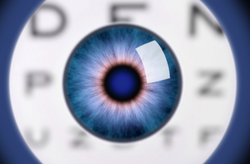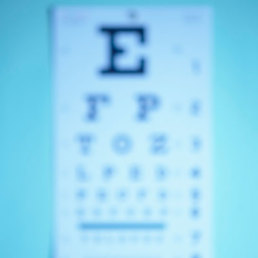Welcome to the Virtual MS Center!
Ask any question you want about Multiple Sclerosis and one of our experts will answer it as soon as possible.
 Question: Four days ago I noticed that my distance vision was much worse than usual. While driving to an appointment I noticed that I could not read road signs until I was right under them. Three days before that I had no problem. (I did not go anywhere the other 2 days but did not notice a problem around the house.) In February 2016 at my annual ophthalmologist exam my corrected vision was 20/20 near and far. I have never had this problem before but I had become moderately over-heated that day so I went home and rested with the A/C on. But my vision did not improve. I could not read the banners on the TV at all either. So yesterday I went to the emergency room (holiday weekend, my neuro unavailable) where a neurology PGY3 did a very thorough exam and found nothing abnormal except my usual mild hyper-reflexia and poor distance vision of 20/200 in BOTH eyes with my glasses on. My near vision was still 20/20 with my glasses. An ophthalmology resident (? PGY3) also saw me and did a detailed exam including a dilated fundoscopic exam. She saw no abnormalities except for the poor distance vision. I saw colors fine and had grossly normal visual fields. Neurology says it is not from MS or otherwise neurologic and ophthalmology said I should see my eye doctor to get new glasses. They admitted they don't really know what is wrong or why this happened. I know it is not like optic neuritis which I may have had 6-7 months ago for the first time, though I doubt it. (At that time I had 3 days of right eye pain with eye movement and no other symptoms or findings on exam by my own ophthalmologist but doc said mild ON. It went away without treatment.) But how can you have a refractive change from 20/20 to 20/200 over a period of hours? I feel fine otherwise except that I am getting a headache from squinting. I hope I can see my own ophthalmologist in the next couple of days and that new glasses will help because I am homebound until I can see better. Should I have an MRI? It has only been a year since my last one but I had no vision problems then. I am so happy that my near vision has been spared because I don't know what I would do with myself if I could not read and knit. But I worry that it might become affected too. I am 59 yo and have had MS since 2003. Answer: Your change in your distance vision that is correctable with prescription eyeglasses is called myopic shift (you have become more near sighted). This is not a manifestation of multiple sclerosis or optic neuritis. One of the most common causes of myopic shift is cataracts (some patients with MS may develop cataracts if they have had frequent doses of steroids over the years for treatment of MS relapses) Other causes of myopic shift may include medication side effects (for example topirimate (also known as Topamax) may cause myopic shift). I recommend you follow up with your ophthalmologist to review if you have any medications or cataracts that could be causing this change in your vision. Benjamin Osborne, MD Associate Professor Departments of Neurology and Ophthalmology Georgetown University Hospital Here is My Question:
I have MS and went blind in one eye for two days. Scariest thing ever. My doctor said this is common in MS. My questions are why is this common in MS? Why does this happen/what is going on in my body with the MS that would cause just one eye to loose sight (so weird), and is there anything I can do to prevent it from happening again?? Answer: Losing vision in one eye can happen in MS due to a condition called optic neuritis. The vision becomes blurry because of inflammation in the optic nerve (the optic nerve connects your eye to your brain). With MS, the body's immune system can sometimes cause inappropriate inflammation and damage to the optic nerve leading to temporary vision loss. The immune system's attack on the optic nerve may flare up, and then the vision becomes blurry. The vision returns back to normal (or almost back to normal) when the inflammation resolves and the optic nerve has time to heal. Usually patients do not go completely blind but experience hazy or decreased vision associated with pain in the eye. The eye pain is typically worse with eye movements. Usually the vision loss associated with optic neuritis will resolve after a few weeks but can improve more rapidly if treated with intravenous steroids. To prevent recurrent episodes of optic neuritis, patients with MS should be on some form of immunomodulatory therapy that is FDA approved for relapsing multiple sclerosis (for example, interferon therapy, glatiramer acetate, natalizumab, or one of the several pills now approved for MS). To figure out which medicaiton is best for you, consultation with your neurologist or an MS specialist is required. Finally, not all forms of transient vision loss are due to multiple sclerosis. If you or your neurologist are not sure what caused your vision loss, consider seeing a neuro-ophthalmologist for further evaluation." Sincerely, Benjamin Osborne, MD Associate Professor Departments of Neurology and Ophthalmology Georgetown University Hospital  Here is My Question: Why does my vision get blurry when I get hot? It happens a lot in the summer and it is so annoying! Is there anything I can do about it? Answer: Blurry vision is a very common symptom in patients with multiple sclerosis. Blurry vision that is triggered by heat typically occurs in the eyes of patients who have had a prior episode of optic neuritis. This phenomenon was first described an ophthalmologist in the 19th century and is called Uhtoff's phenomenon, in his honor. Typically patients who have had optic neuritis will have very good recovery of visual acuity in the affected eye. However, if the body gets overheated (for example after vigorous exercise or in the summer heat) the vision in the previously affected eye will temporarily get blurry. Once the body cools off (air conditioning, or drinking an ice cold beverage) the blurry vision resolves rapidly. Uhtoff's phenomenon is not considered an MS relapse but is a reminder that the optic nerve has suffered prior injury from the multiple sclerosis. If both eyes have had optic neuritis in the past then both eyes may become blurry in the heat. The best way to prevent Uhtoff's phenomenon is to stay cool and well hydrated. Some patients with MS are so sensitive to the heat that they wear ice pack vests (these are vests with pockets which can be stuffed with ice packs) when going outdoors in the summer. If you do notice that your vision becomes blurry but does not return back to normal after your body has cooled off, you should consider contacting your neurologist or ophthalmologist (in particular if the blurry vision lasts > 24 hours). Sincerely, Benjamin Osborne, MD Associate Professor Departments of Neurology and Ophthalmology Georgetown University Hospital #blurryvision #Uhtoffs #multiplesclerosis  Q: I have either PPMS or SPMS, and my opthalmologist just checked my eyes and said that I have pale optic nerves. This is something new, since I get my eyes checked by this retinal specialist every year. Several years before I was diagnosed with MS, I had a bout of tunnel vision that lasted for a few months, but am not sure if that was a relapse. Could these two things relate? Am I in danger of losing my vision? What do I do? A: Optic nerve pallor is a finding on examination with many causes. The normal optic disc has a pink coloration from the small blood vessels supplying the nerve head and adjacent retina. When there is permanent damage to the nerve fibers traveling through the disc there is also a loss of these small blood vessels resulting in a characteristic white or pale coloration to some or all of the optic nerve head. By the way this is the only part of your central nervous system that we can actually see without opening your skull, so it is an important part of the examination. Optic nerve pallor can be difficult to detect early, particularly when the process involves both eyes. At this stage it usually requires special equipment to detect. Eventually, the change in coloration becomes obvious even when when involving both eyes. Optic nerve pallor is a sign of a disease not a problem by itself. It is not unusual for MS patients to have significant optic nerve atrophy but preserved visual acuity (the ability to see objects of smaller and smaller size with maximal contrast). However, there is usually a loss of low contrast vision, especially in low light situations, and some alteration of color vision (reds appear dull). Special testing often reveals areas in your field of vision that are worse than others called a visual field defect. While it is possible for a person with MS to eventually become blind from progressive optic atrophy this is less common than one would expect. There are other causes of optic atrophy, even in a patient with known multiple sclerosis, and an ophthalmologist is the correct person to see if there is anything atypical about the optic atrophy. Before MRI scans were available, optic nerve atrophy was considered one of the diagnostic hallmarks of MS; in fact if you saw a person with longstanding MS without optic nerve pallor, physicians were taught to re consider the diagnosis of MS. There is no specific treatment to prevent further optic nerve atrophy if it is caused by multiple sclerosis. There are some other treatable causes such as smoking and B vitamin deficiencies. It is essential to quit smoking as soon as possible and take a multivitamin daily. You neurologist can talk to you about other possible causes but ask him or her to focus on the treatable conditions. --Dr. Kinkel |
PLEASE NOTE: This information/opinions on this site should be used as an information source only. This information does not create any patient-HCP relationship, and should not be used as a substitute for professional diagnosis and treatment. Please consult your health care provider before making any healthcare decisions or for guidance about a specific medical condition.
Archives
June 2024
Categories
All
|